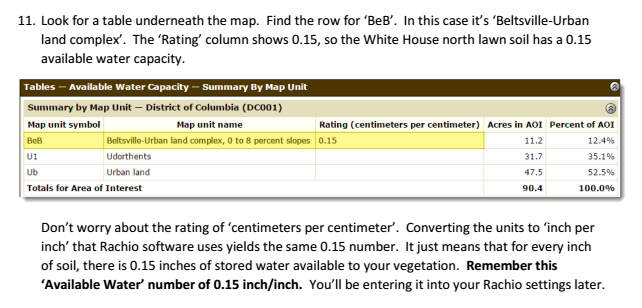The Web Soil Survey test results show that I have CeB2—Cecil sandy clay loam. What soil type in Rachio should I specify?
CeB2—Cecil sandy clay loam, 2 to 6 percent slopes, moderately eroded
Map Unit Setting
National map unit symbol: 2th00
Elevation: 450 to 1,450 feet
Mean annual precipitation: 40 to 69 inches
Mean annual air temperature: 50 to 66 degrees F
Frost-free period: 180 to 280 days
Farmland classification: All areas are prime farmland
Map Unit Composition
Cecil, moderately eroded, and similar soils: 92 percent
Minor components: 8 percent
Estimates are based on observations, descriptions, and transects of the mapunit.
Description of Cecil, Moderately Eroded
Setting
Landform: Interfluves
Landform position (two-dimensional): Backslope, shoulder, summit
Landform position (three-dimensional): Interfluve, side slope
Down-slope shape: Convex
Across-slope shape: Linear
Parent material: Residuum weathered from granite and/or residuum weathered from gneiss
Typical profile
A - 0 to 3 inches: sandy clay loam
Bt - 3 to 48 inches: clay
BCt - 48 to 80 inches: sandy clay loam
Properties and qualities
Slope: 2 to 6 percent
Depth to restrictive feature: More than 80 inches
Natural drainage class: Well drained
Capacity of the most limiting layer to transmit water (Ksat): Moderately high to high (0.57 to 1.98 in/hr)
Depth to water table: More than 80 inches
Frequency of flooding: None
Frequency of ponding: None
Available water storage in profile: High (about 9.3 inches)
Interpretive groups
Land capability classification (irrigated): None specified
Land capability classification (nonirrigated): 3e
Hydrologic Soil Group: B
Hydric soil rating: No
Minor Components
Cataula, moderately eroded
Percent of map unit: 5 percent
Landform: Interfluves
Landform position (two-dimensional): Backslope, shoulder
Landform position (three-dimensional): Interfluve, side slope
Down-slope shape: Convex
Across-slope shape: Linear
Hydric soil rating: No
Bethlehem, moderately eroded
Percent of map unit: 3 percent
Landform: Interfluves
Landform position (two-dimensional): Shoulder, backslope
Landform position (three-dimensional): Side slope, interfluve
Down-slope shape: Convex
Across-slope shape: Linear
Hydric soil rating: No

